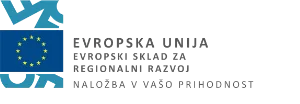Healthcare is a sector that attracts significant interest and investment due to its critical importance to society and The KPI for all healthcare solutions is easy to understand: improve patient outcomes. This can mean a lot of things, but since 3fs is a tech company in med-tech, let's focus on these:
- Promote promising new technologies
- Capitalize on available data
- Reduce the cost of medical procedures
- Increase patient survivability
A few years ago we witnessed a perfect moment for innovation and for addressing the above KPIs as we were working with The Simulation Centre of Ljubljana on AWAKE. We deployed the world's best AR/VR solution to train for life-threatening rare medical events (read more about it here) and were observing data coming in.
But we wanted to take a step forward. Not only to create a completely synthetic, but believable environment. Combining real life medical devices with augmented experience to showcase our world class experience with IoT and enable real time data flow.
Our aspirations
We envisioned a world where patients on route to health institutions in emergency vehicles could receive a better and more cost effective treatment while on route but even more so when reaching the emergency department. Together with some partners and primary hospital in Ptuj, specifically their ER, we successfully applied for EU grants that would test the usefulness of the following technological and also medical treatment concepts:
- Creating a digital twin of an ambulance
- Connect medical devices in the ambulance to a common IoMT platform
- Project medical devices data + elements of patient EMR on to augmented reality goggles in the ambulance itself
- Establish a digital twin of an ambulance on route inside of the emergency department
Our responsibility was the tech side, so let’s dig a bit deeper on that.
How we developed a digital twin of an ambulance
Ambulances in Slovenia are fairly standardized and to our surprise, a lot of the medical devices used in them have the capability to be connected and to send data to a defined destination.
The key was to capture this data in a secure and reliable way and expose it to an augmented reality digital twin.

IoMT solution
In order to achieve that, we had to develop and deploy our proprietary Internet of medical things (IoMT) solution, working on site - in the ambulance. While we have years of experience in IoT, connecting medical devices of various vendors and IoMT maturity proved to be a challenge. Medical device interoperability (MDI) standards do exist, but ease of interoperability leaves a lot of room for improvement and IEEE 11073, commonly known as SDC was not really a thing back then.
So device by device integration was required, almost hacking our way to a solution that would unify all the medical device data in an ambulance under the umbrella of our own IoMT solution, deployed in the vehicle.
Connectivity
Next step was connectivity. We had technical capabilities to include 5g technologies, but the maturity of the pilot deployments back then was low, so V2X promises had to be left untested.
So did the 5g modem, paving the way to a more classical solution: two LTE modems with 2 SIM cards from 2 network standalone CSPs. Just to be sure that the data gets through to the final end consumer: medical staff in the emergency department, preparing for the arrival of the patient.
Open EHR
Last step was to read and write to hospital information systems or/and EHRs. Since we were working in a very controlled environment, integration to HIS should not be a problem. But we went a bit further.
We deployed our own OpenEHR based server (that later on served as a basis for Iryo Moshi) and we began with storing clinical data there (we kept on storing medical device data in our IoMT platform).
Why OpenEHR? Slovenia is one of the early adopters of this open standard and our country wide medical data backbone is based on it.
Conclusion
With deployment of our AWAKE platform, IoMT platform and integration into OpenEHR server, we concluded that access to medical data, either from the EHR or medical devices, can be crucial for improving patient outcomes.
Out of all use cases of connected devices in the medical world, ambulances are possibly the most stressful and difficult one. Interestingly enough, even hospital control environments are still facing the difficulty of connected devices, normalized and interoperable data. Let's hope that upcoming standards, such as SDC will be of help.
References
AWAKE is also available for personal use. If you have a VR device and you would like to experience Awake Heart and ECG, you can get them in the Oculus store.
For further information about AWAKE, please visit their official website: https://www.awake.health/
AWAKE was co-financed (1.073.532,41 €) by the Slovenian Ministry of Economic Development and Technology & the European Union, from the European Regional Development Fund (https://www.eu-skladi.si)





